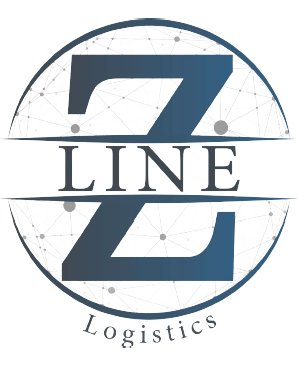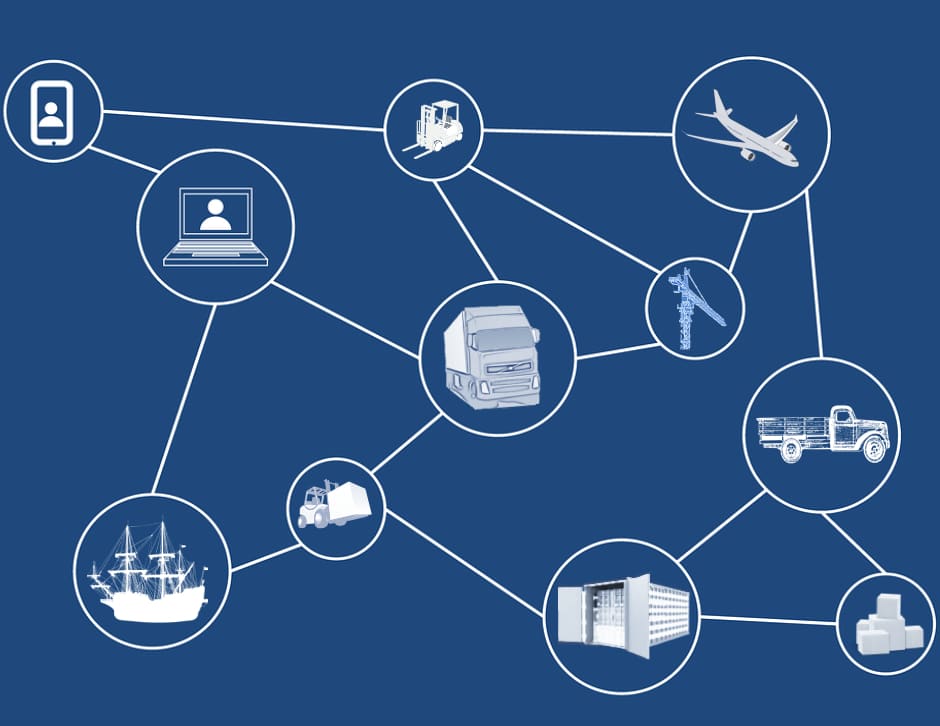How is Blockchain used in Logistics? Think for a moment about the sheer complexity of getting a product from its origin to your doorstep.
It’s a journey often involving numerous parties, countless documents, and a whole lot of trust. Have you ever stopped to consider how all of that information is managed and secured?
In today’s intricate global supply chains, keeping track of goods, ensuring their authenticity, and handling the mountain of paperwork can be a real headache.
But what if there was a way to bring more transparency, efficiency, and security to this entire process? Enter blockchain, the technology that first gained fame powering cryptocurrencies.
While you might initially associate it with digital currencies, its unique ability to create a shared, immutable record is proving to be a game-changer in a surprising number of industries, and logistics is definitely one of them.
In this blog post, we’ll dive into the fascinating world of how blockchain is being used to revolutionize logistics, exploring the benefits it offers for everyone involved in moving goods across the globe.
Table of Contents
Defining Blockchain in Logistics
Imagine a shared digital notebook where everyone involved in moving goods can see and record information.
This notebook is special because once something is written down, it can’t be erased or changed by anyone alone – everyone has to agree. That’s kind of like blockchain in logistics.
It’s a way to keep track of everything that happens to a product as it travels from its starting point to where it needs to go.
Think about a package going from a factory to your house. With blockchain, every step of this journey – when it left the factory, when it was put on a truck, when it arrived at a warehouse, and finally when it was delivered to you – can be recorded in this shared digital notebook.
Because everyone has a copy of this notebook and every new entry needs to be agreed upon, it makes the information very trustworthy and hard to fake.
This helps in logistics because it means everyone can see where the goods are, who handled them, and if anything happened along the way.
This makes the whole process more clear, efficient, and secure, helping companies track their products better and making sure everything arrives as it should.
For more insights, explore Is Air Freight Cheaper than Sea Freight? Complete Comparison in 2025
How is Blockchain used in Logistics?

Blockchain technology is being used in various ways to address key challenges and improve efficiency within the logistics industry. Here are some of the main applications:
1. Enhanced Transparency and Traceability
Imagine a shipment of organic coffee beans traveling from a farm in Ethiopia to a café in Amsterdam.
Traditionally, tracking this journey involves multiple paper documents and disparate systems, making it difficult to get a holistic view.
Blockchain offers a solution by creating a shared, immutable ledger where every event in the coffee beans’ journey is recorded as a transaction.
- Detailed Tracking: When the beans are harvested, a digital record is created on the blockchain, including details like the farm’s location, harvest date, and batch number.
- As the shipment moves through different stages – processing, packaging, customs clearance, shipping, warehousing, and final delivery – each transfer of custody and any relevant information (e.g., temperature readings, inspection results) is added as a new, timestamped block to the chain.
- Immutable Record: Once a record is added to the blockchain, it cannot be altered or deleted. This ensures the integrity and accuracy of the information, providing an indisputable history of the goods.
- Real-Time Visibility: Authorized stakeholders, such as the farmer, the exporter, the shipping company, the importer, and even the café owner, can access this information in real-time, gaining complete visibility into the supply chain.
- Companies like IBM Food Trust utilize blockchain to track food products, allowing consumers to scan a QR code and see the entire journey of their food, from farm to table.
Keep reading on What is the Meaning of Stocktaking? The 4 Differences Between Stocktaking and Stock Checking
2. Streamlining Documentation and Reducing Paperwork
The sheer volume of paperwork involved in international logistics is staggering, leading to delays, errors, and significant costs. Blockchain offers a digital alternative:
- Digital Bills of Lading (eBLs): Traditionally, a bill of lading (BOL) is a crucial paper document that serves as a receipt of shipment, a contract of carriage, and a document of title.
- Blockchain enables the creation of secure, digital eBLs that can be easily transferred between parties, eliminating the need for physical documents and reduces the risk of loss or damage, speeds up the transfer process, and lowers printing and courier costs.
- Automated Customs Declarations: Blockchain can facilitate the secure and efficient sharing of customs information between shippers, customs authorities, and other relevant parties.
- Smart Documentation: By leveraging smart contracts, certain documents can be automatically generated and verified based on pre-defined conditions.
- For example, a certificate of origin could be automatically issued once the shipment reaches a specific location.
Discover more on Global Sourcing Advantages and Disadvantages
3. Improving Security and Preventing Fraud
The complexity and global nature of logistics make it vulnerable to fraud, counterfeiting, and the introduction of illicit goods. Blockchain provides robust security features:
- Tamper-Proof Records: The cryptographic hashing and distributed nature of blockchain make it extremely difficult to alter records without the consensus of the network.
- This ensures the integrity of the data and prevents fraudulent activities like changing shipping details or falsifying documentation.
- Counterfeit Prevention: By recording unique identifiers for products on the blockchain, it becomes easier to track their authenticity and prevent the entry of counterfeit goods into the supply chain.
- Consumers can potentially verify the authenticity of a product by scanning a code linked to its blockchain record.
- Secure Transfer of Ownership: Blockchain provides a secure and transparent way to track the transfer of ownership of goods, reducing the risk of disputes and ensuring clear accountability.
- Example: Everledger uses blockchain to track the provenance of diamonds, ensuring they are conflict-free and authentic, providing transparency to consumers and the industry.
Continue reading The Positive and Negative Impacts of the Amazon Effect on Freight in Dubai
4. Smart Contracts: Automating Agreements and Payments: Logic on the Ledger
Smart contracts automate the execution of agreements based on predefined conditions, eliminating the need for intermediaries in certain processes:
- Automated Payments: In logistics, smart contracts can be programmed to automatically release payments to carriers or suppliers once proof of delivery is verified on the blockchain.
- Conditional Release of Goods: Smart contracts can be used to control the release of goods at different stages of the supply chain based on specific conditions being met, such as the completion of customs clearance or the receipt of payment.
- Automated Penalties and Rewards: Smart contracts can automatically enforce penalties for delays or reward parties for early delivery, ensuring adherence to agreed-upon terms.
- Example: A shipper and a carrier could agree on a smart contract that automatically pays the carrier upon confirmation of successful delivery, as verified by GPS data recorded on the blockchain.
For more info: What is KPI in Last-Mile Delivery? 5 Crucial Last Mile Delivery KPIs
5. Improving Cold Chain Integrity with Blockchain-Enabled IoT
For temperature-sensitive goods, maintaining the correct environment is crucial for quality and safety. Blockchain combined with IoT sensors provides a reliable solution:
- Real-Time Temperature Monitoring: IoT sensors attached to shipments can continuously monitor temperature, humidity, and other environmental conditions.
- Immutable Temperature Logs: The temperature data stored on the blockchain cannot be tampered with, providing an auditable and trustworthy record of the conditions the goods were exposed to during transit.
- Automated Alerts and Actions: Smart contracts can be triggered if the temperature deviates from the acceptable range, automatically alerting stakeholders and potentially initiating corrective actions.
- Pharmaceutical companies are exploring the use of blockchain and IoT to ensure the integrity of vaccines and other temperature-sensitive medications throughout their journey from manufacturing to patients.
For more insights, explore Is Air Freight Cheaper than Sea Freight? Complete Comparison in 2025
6. Facilitating Faster Cross-Border Payments
Traditional cross-border payments in logistics can be slow, expensive, and involve multiple intermediaries. Blockchain offers a more efficient alternative:
- Reduced Transaction Fees: By eliminating intermediaries like correspondent banks, blockchain-based payment systems can significantly reduce transaction fees.
- Faster Settlement Times: Blockchain transactions can be processed much faster than traditional bank transfers, leading to quicker payment settlement.
- Increased Transparency: All transactions on the blockchain are recorded and visible to authorized parties, providing greater transparency in the payment process.
- Example: Some blockchain platforms are being developed specifically to facilitate cross-border trade finance and payments, streamlining the financial aspects of international logistics.
These are just some of the key ways blockchain is being used in logistics. As the technology continues to mature and adoption increases, we can expect to see even more innovative applications emerge, further transforming the industry.
Read more: Understanding the 6 Different Types of Supply Chain Management
As we’ve explored, the integration of blockchain technology into the logistics sector isn’t just a futuristic concept – it’s happening now and holds immense potential.
From creating tamper-proof records of shipments and streamlining customs processes to enhancing the visibility of goods and building stronger trust among all the players in the supply chain, the advantages are clear.
Imagine a world with fewer delays, reduced costs, and greater confidence in the integrity of your shipments.
That’s the promise of blockchain in logistics. If you’re intrigued by the possibilities and want to understand how these innovative solutions can be practically applied to your business and logistics needs, we encourage you to reach out to the experienced team at Z Line Logistics.
We’re at the forefront of understanding and implementing these advancements, and we’d be happy to discuss how we can help you leverage the power of modern technology to optimize your supply chain.
Contact Z Line Logistics today to explore the future of logistics together.




